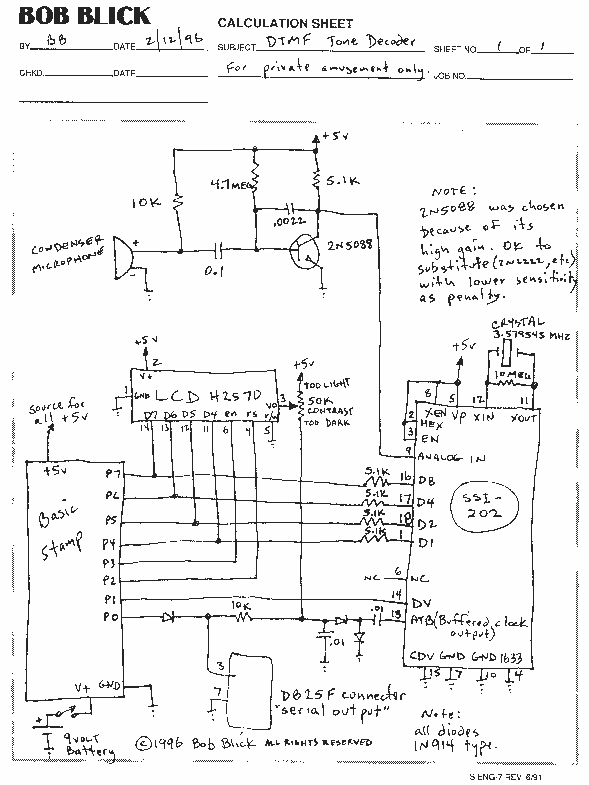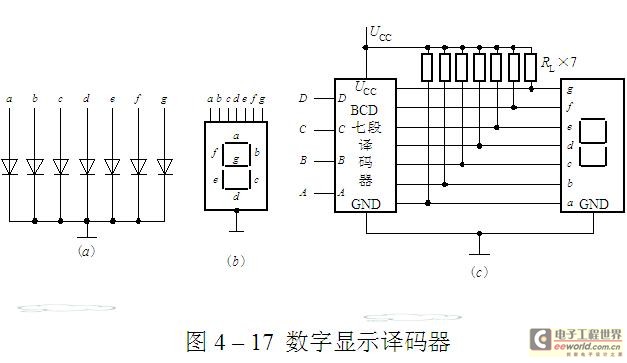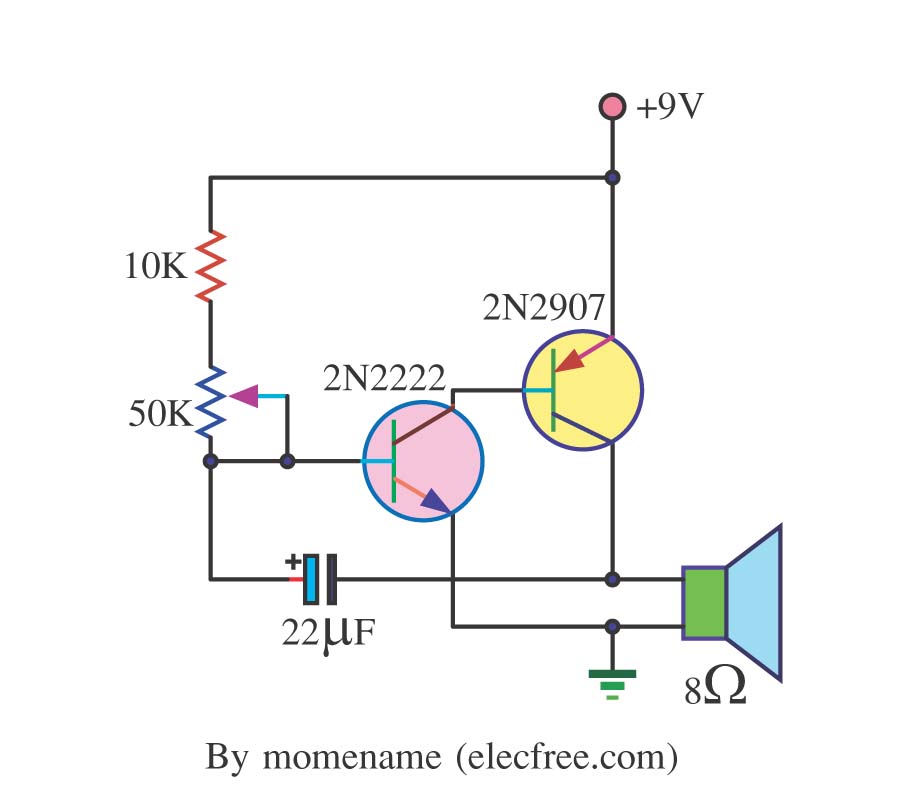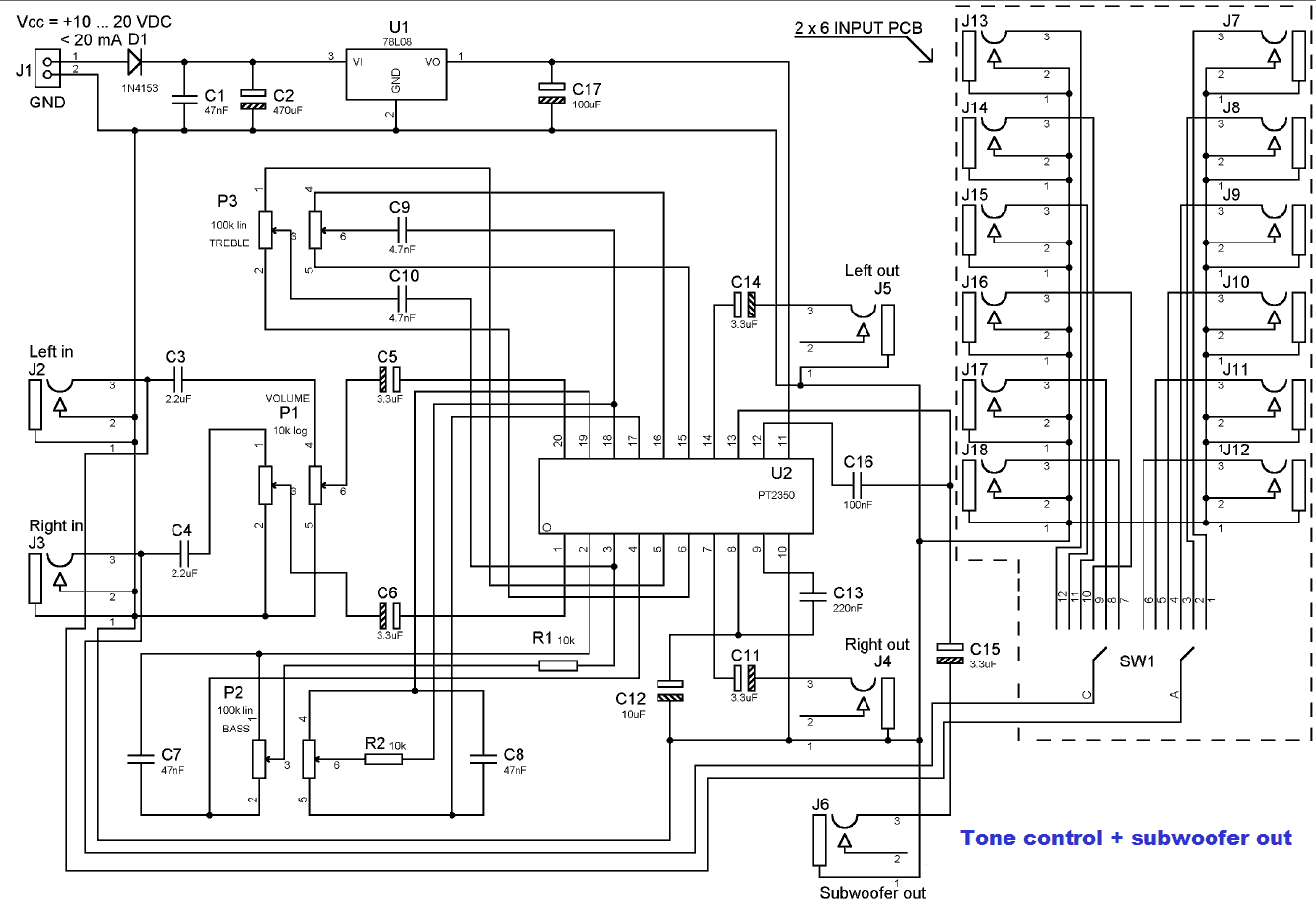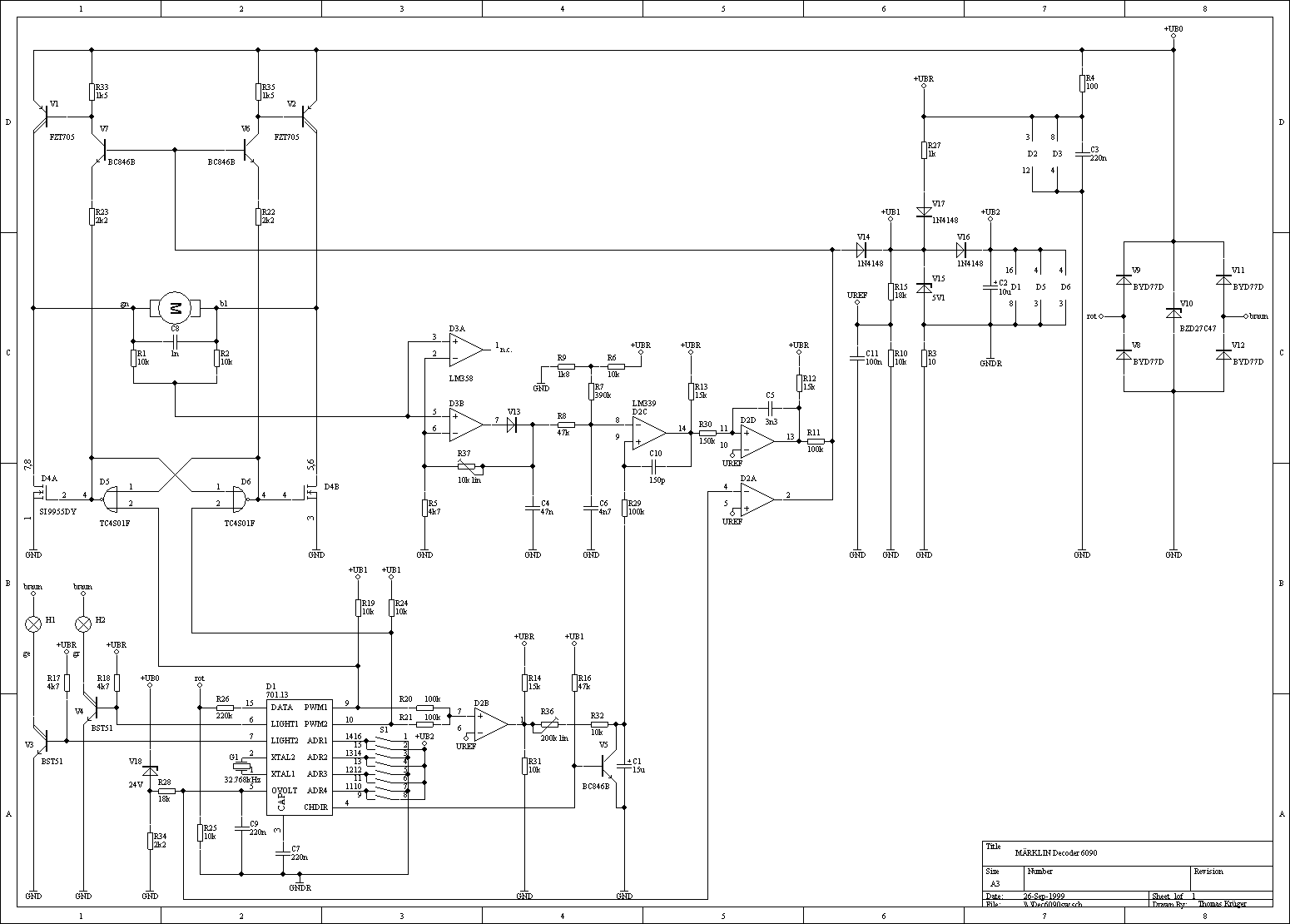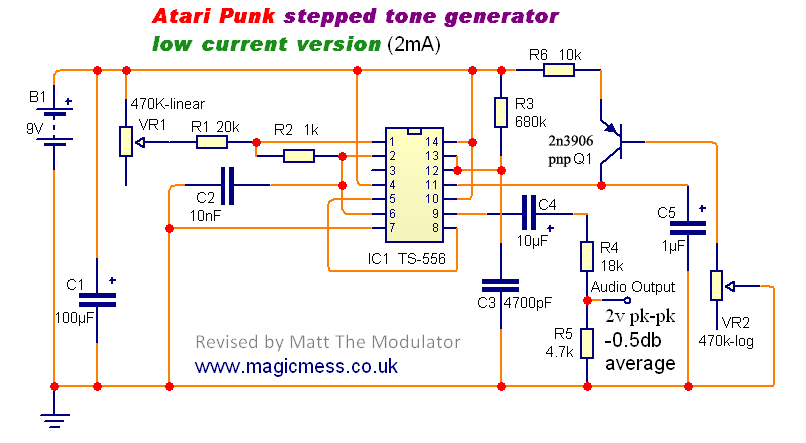
tone decoder

For certain applications, it is crucial to utilize a tone decoder that features a narrow bandwidth and a fast response time. This objective can be achieved with the dual time constant tone decoder circuit presented. The circuit incorporates two low-pass loop filter capacitors, C2 and C'2. In the absence of an input signal, the output at pin 8 remains high, turning off transistor Qj and disconnecting capacitor C'2 from the circuit. Consequently, the low-pass filter operates solely with capacitor C2, which can be minimized in size to enhance response time. Upon detection of an in-band signal, the output at pin 8 transitions to low, activating the transistor and incorporating capacitor C'2 in parallel with capacitor C2. The resulting low-pass filter capacitance becomes C2 + C'2, allowing C'2 to have a relatively large value to achieve a narrow bandwidth. When no input signal is present, the bandwidth is defined by capacitor C2.
The dual time constant tone decoder circuit is designed to optimize the performance characteristics required for specific applications, particularly in communication systems where signal fidelity and quick response to tone changes are paramount. The operational principle relies on the dynamic switching of capacitors to manipulate the filter characteristics based on the presence of input signals.
Capacitor C2 serves as the primary filter element when no tone is detected, ensuring a rapid response time due to its minimized capacitance, which allows for quick charge and discharge cycles. This characteristic is essential in applications where swift detection of tone signals is necessary to maintain system responsiveness.
Upon the detection of a tone signal, transistor Qj is activated, resulting in the integration of capacitor C'2 into the circuit. This capacitor, which can be significantly larger than C2, effectively reduces the overall cutoff frequency of the low-pass filter, thus narrowing the bandwidth. The ability to adjust the bandwidth dynamically is particularly advantageous in environments with varying signal conditions, enabling the circuit to filter out unwanted noise while maintaining the integrity of the desired tone signal.
The design of the dual time constant tone decoder circuit exemplifies a sophisticated approach to signal processing, where the interplay between capacitors allows for tailored filtering characteristics that can adapt to the demands of different applications. This adaptability is crucial in ensuring effective communication in various electronic systems, from simple tone detection to complex communication protocols.For some applications it is important to have a tone decoder with narrow bandwidth and fast response time. This can be accomplished by the dual time constant tone decoder circuit shown. The circuit has two low-pass loop filter capacitors, C2 and C'2. With no input signal present, the output at pin 8 is high, transistor Qj is off, and C'2 is switched out of the circuit.
Thus, the loop low-pass filter is comprised of C2, which can be kept as small as possible for minimum response time. When an in-band signal is detected, the output at pin 8 will go low, will turn on, and capacitor C'2 will be switched in parallel with capacitor C2.
The low-pass filter capacitance will then be C2 + C'2. The value of C'2 can be quite large in order to achieve narrow bandwidth. During the time that no input signal is being received, the bandwidth is determined by capacitor C2.
The dual time constant tone decoder circuit is designed to optimize the performance characteristics required for specific applications, particularly in communication systems where signal fidelity and quick response to tone changes are paramount. The operational principle relies on the dynamic switching of capacitors to manipulate the filter characteristics based on the presence of input signals.
Capacitor C2 serves as the primary filter element when no tone is detected, ensuring a rapid response time due to its minimized capacitance, which allows for quick charge and discharge cycles. This characteristic is essential in applications where swift detection of tone signals is necessary to maintain system responsiveness.
Upon the detection of a tone signal, transistor Qj is activated, resulting in the integration of capacitor C'2 into the circuit. This capacitor, which can be significantly larger than C2, effectively reduces the overall cutoff frequency of the low-pass filter, thus narrowing the bandwidth. The ability to adjust the bandwidth dynamically is particularly advantageous in environments with varying signal conditions, enabling the circuit to filter out unwanted noise while maintaining the integrity of the desired tone signal.
The design of the dual time constant tone decoder circuit exemplifies a sophisticated approach to signal processing, where the interplay between capacitors allows for tailored filtering characteristics that can adapt to the demands of different applications. This adaptability is crucial in ensuring effective communication in various electronic systems, from simple tone detection to complex communication protocols.For some applications it is important to have a tone decoder with narrow bandwidth and fast response time. This can be accomplished by the dual time constant tone decoder circuit shown. The circuit has two low-pass loop filter capacitors, C2 and C'2. With no input signal present, the output at pin 8 is high, transistor Qj is off, and C'2 is switched out of the circuit.
Thus, the loop low-pass filter is comprised of C2, which can be kept as small as possible for minimum response time. When an in-band signal is detected, the output at pin 8 will go low, will turn on, and capacitor C'2 will be switched in parallel with capacitor C2.
The low-pass filter capacitance will then be C2 + C'2. The value of C'2 can be quite large in order to achieve narrow bandwidth. During the time that no input signal is being received, the bandwidth is determined by capacitor C2.
